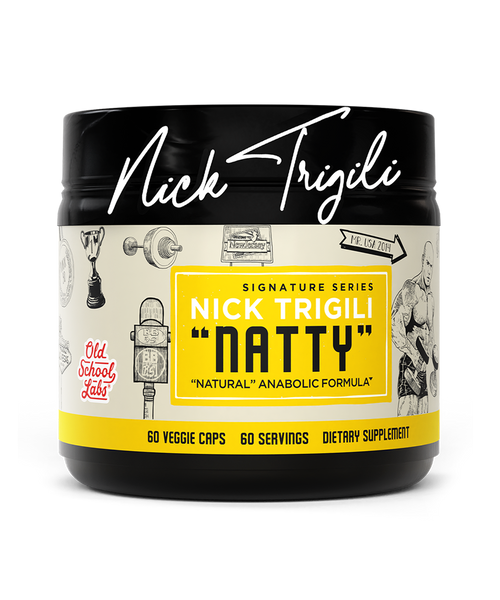As the winter season sets in, many fitness enthusiasts shift their focus to bulking – a strategic approach to building muscle mass. Bulking involves consuming a calorie surplus to support muscle growth, and the winter months provide an ideal environment for this endeavor. In this article, we will explore what bulking entails, how to determine your calorie baseline and surplus consumption, and effective strategies to kick-start your winter bulking phase, including the use of calorie-tracking apps.
Understanding Bulking
Bulking is a phase in bodybuilding and strength training where the primary goal is to maximize muscle growth. During this phase, individuals consume a calorie surplus to provide the body with the necessary nutrients to build and repair muscle tissue. Bulking typically involves a combination of resistance training, proper nutrition, and adequate rest.
Determining Calorie Baseline and Surplus Consumption
Before embarking on a bulking phase, it is crucial to determine your calorie baseline and calculate the surplus consumption required for muscle growth. Here's how:
- a. Calorie Baseline: Start by calculating your daily caloric needs at maintenance, which is the number of calories required to maintain your current weight. Several factors influence this number, including age, gender, weight, height, activity level, and metabolism. Online calculators and formulas such as the Harris-Benedict equation can provide a rough estimate.
- b. Calorie Surplus: To bulk effectively, aim for a calorie surplus of around 250-500 calories per day. This surplus ensures that your body has an adequate energy supply for muscle growth without excessive fat gain. It's essential to strike a balance to avoid excessive weight gain or minimal muscle growth.
Clean Vs Dirty Bulking
Initiating the Bulking Phase:
Once you have determined your calorie baseline and surplus, it's time to initiate the bulking phase. Here are some key strategies to consider:
- a. Balanced Macronutrient Intake: Focus on consuming a well-balanced diet that includes an adequate intake of macronutrients. Prioritize high-quality protein sources, such as lean meats, poultry, fish, eggs, and legumes, to support muscle repair and growth. Carbohydrates and healthy fats should also be incorporated into your diet to provide energy and support overall health.
- b. Progressive Resistance Training: Combine your calorie surplus with a well-structured resistance training program. Emphasize compound exercises that target multiple muscle groups, such as squats, deadlifts, bench presses, and overhead presses. Gradually increase the intensity and volume of your workouts to stimulate muscle growth.
- c. Sufficient Rest and Recovery: Adequate rest is crucial for muscle growth. Ensure you allow your body enough time to recover between workouts and prioritize quality sleep. Aim for 7-9 hours of uninterrupted sleep per night to optimize recovery and hormone regulation.
Utilizing Calorie Tracking Apps
In the digital age, numerous calorie tracking apps are available to assist in monitoring your calorie intake during the bulking phase. These apps allow you to track your daily food consumption, set goals, and monitor macronutrient ratios. Here are a few popular apps to consider:
- a. MyFitnessPal: This app offers a vast database of foods, making it easy to track your calorie intake and macronutrient distribution. MyFitnessPal also provides personalized recommendations based on your goals and progress.
- b. Lose It!: With a user-friendly interface, Lose It! allows you to set goals, track your food intake, and monitor your progress. It also offers a barcode scanner feature for convenient food logging.
- c. Fitbit App: If you already use a Fitbit device, the Fitbit app can seamlessly integrate with it to track your calorie consumption and activity levels. It provides valuable insights into your overall health and fitness progress.
Here is a list of high-calorie foods that can support your bulking goals during the winter:
- Almonds, walnuts, cashews, and peanut butter are high in healthy fats and calories. They provide a concentrated source of energy and essential nutrients.
- Avocados are rich in healthy fats, fiber, and calories. They can be added to salads, sandwiches, or consumed on their own.
- Cheese, such as cheddar, Swiss, or mozzarella, is calorie-dense and provides protein and calcium. It can be added to meals, snacks, or used as a topping.
- Whole milk, full-fat yogurt, and cream are high in calories and provide protein, calcium, and other important nutrients.
- Raisins, dates, prunes, and dried apricots are concentrated sources of calories and provide natural sugars, fiber, and certain vitamins and minerals.
- Olive oil, coconut oil, and other healthy oils are calorie-dense and can be used for cooking or added to meals and dressings.
- Granola and certain granola bars are often high in calories due to their combination of oats, nuts, seeds, and sweeteners.
- Foods like quinoa, brown rice, whole wheat bread, and pasta provide complex carbohydrates, fiber, and additional calories.
- Dark chocolate with a high percentage of cocoa is a calorie-dense treat that also provides antioxidants and healthy fats.
- Foods like salmon, beef, chicken thighs, and legumes are not only high in protein but also contain more calories compared to their leaner counterparts.
Conclusion:
Winter bulking can be an effective approach to maximizing muscle growth, provided it is done strategically. By determining your calorie baseline, calculating your surplus, and embracing key strategies such as balanced nutrition, resistance training, and sufficient rest, you can make significant progress during the winter months. Additionally, utilizing calorie-tracking apps can enhance your accountability and help you stay on track with your bulking goals. Remember, consistency and patience are key when it comes to achieving long-term muscle growth and a well-rounded physique.






